INTRODUCTION
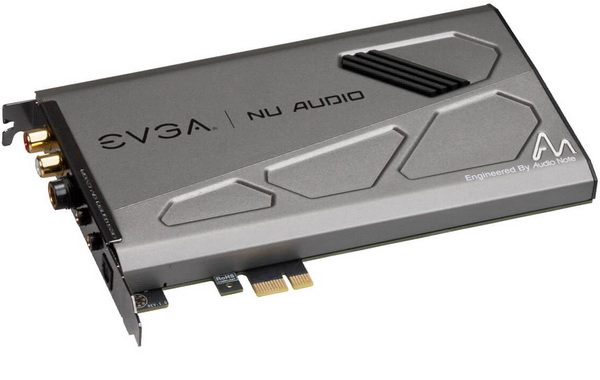
The very first sound card I ever owned was a Sound Blaster 16 "compatible" model which I installed in my brand new 80486DX2 system back in 1992 if I recall correctly (or was it 1993?). Of course back then the leading manufacturer called Creative Labs wasn't anywhere to be found where I lived so a clone was the next best thing one could get to enjoy the best possible sound (even though only tiny stereo speakers existed for the PC back then) with all latest and upcoming titles like Wing Commander 2/3, Star Wars Tie Fighter, Command and Conquer, Warcraft and Doom (among many others). However by the time many of these titles made it here 2+ years later Creative Labs did have a distributor so i had already purchased their latest Sound Blaster AWE32 sound card which was pretty much the best any gamer could hope to have back then (that too was replaced later on with the far more advanced Sound Blaster AWE64 Gold - perhaps the very first sound card to prepare us for what was to come, not only in terms of audio performance but also build quality and looks). Fast forward to today and Creative Labs (just Creative now) is no longer the driving force in the PC audio industry (at least nowhere near to the degree they did back then) and that "gap" has allowed other manufacturers to also launch their very own solutions (some very successful ones I might add). EVGA is the latest manufacturer to do so with their NU Audio card which we've been using for almost 2 weeks now.
EVGA is the #1 NVIDIA authorized partner in channel sales throughout North America. Based on the philosophy of intelligent innovation, market knowledge, and the real time operation, EVGA continues to identify the need in the market place and providing the solution to that need. By offering product differentiation, 24/7 tech support, a 90 day Step-Up program, and other customer focused programs, EVGA is a clear leader in all categories: etail, retail, distribution, and system builders. With headquarters in Brea, CA, EVGA's global coverage includes EVGA GmbH in Munich, EVGA LATAM in Miami, and EVGA Hong Kong. For further information online about EVGA, visit https://www.evga.com.
EVGA announced the NU Audio card earlier this year and since then it has been welcomed by gamers and professionals alike as one of the best audiophile audio cards money can buy today. Just how was a manufacturer like EVGA with zero experience in the audio segment of the industry able to achieve such a result? Well the answer is simple, they enlisted the help of the people over at Audio Note UK, Europe’s largest and most prestigious manufacturer of ultra-performance valve based home audio systems. Now I do have to admit that I only heard of Audio Note UK roughly 3 years ago but their history is filled with impressive feats so it's understandable that EVGA would turn to them for their first audio card. So, what makes the NU Audio Card special? Primarily it is the combination of the xCORE-200 32-bit multicore microcontroller by XMOS (offers up to x256 Native DSD - direct stream digital - support) with the AK4493 and the AK5572 converters (AK4493 is digital-to-analog whereas the AK5572 is analog-to-digital) by Asahi Kasei Microdevices which basically give the NU Audio Card a Dynamic Range (DNR) and Signal to Noise (SNR) of 123dB for stereo playback and 121dB for line-in recording (the card is also Hi-Res Audio certified supporting playback and recording stereo formats of up to 384kHz/32bit). Of course there are other things that make the NU Audio Card quite special such as the swappable ADI OP275 headphone out OP-AMP (16-600 Ohm impedance) and the swappable ADI AD8056 line-out OP-AMP (via OP-AMP rolling these are "future-proof") paired with LME49724 and LME49600 amplifiers by Texas Instruments, various high-quality capacitors (manufactured by the German WIMA, Japanese Panasonic and Nichicon and Audio Note themselves), TPS7A47 and TPS7A33 ultra-low noise power solutions by Texas instruments, customizable RBG lighting (10 modes / audio reactive), metal shroud, copper shielding and its gold plated outputs. Also, as of the 16th of this month (just in time for our tests) EVGA has further updated the software/drivers of the NU Audio card to include several extra features most notably enhanced 3D audio for gamers by Nahimic.
SPECIFICATIONS AND FEATURES

PACKAGING AND CONTENTS
EVGA packs the NU Audio Card inside a black box that has a product picture at the front right beneath the company logo and next to the product name.
The product features are printed at the rear of the box in 6 different languages.
The card is placed inside a formed piece of plastic and underneath a clear plastic film.
Nothing exciting in terms of bundle since the NU Audio Card is shipped with a gold plated 6.3mm to 3.5mm adapter, dual RCA/component (male) to single 3.5mm adapter, OP-Amp rolling information paper, software information paper and an EVGA support paper.
THE NU AUDIO
Measuring 176mm in length, 111mm in height and 16mm in thickness the 898g heavy NU Audio Card by EVGA is quite large.
The Audio Note UK logo is placed on the lower right corner of the card right next to a black heatsink coming out from the aluminum shroud.
A designed by EVGA statement is engraved on the PCI bracket.
At the front of the card we find two gold plated RCA stereo line-outs, gold plated 6.3mm headphone output, 3.5mm line and microphone inputs, and a digital S/PDIF (optical) output.
On the other end we find a SATA power connector (yes, the card needs extra power directly from your PSU - using a Molex to SATA power adapter is not recommended).
At the top we find the front I/O connector and the 10-mode RGB LED.
The NU Audio Card features a silver and gold-plated, multi-layer PCB design.
Exposing the interior is very easy since there are just 7 screws that hold the aluminum shroud in place.
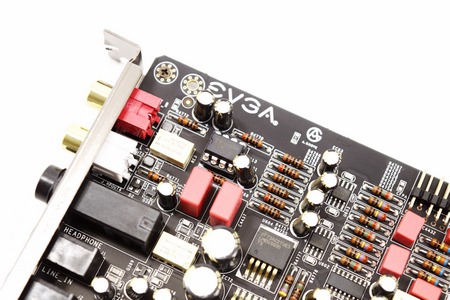
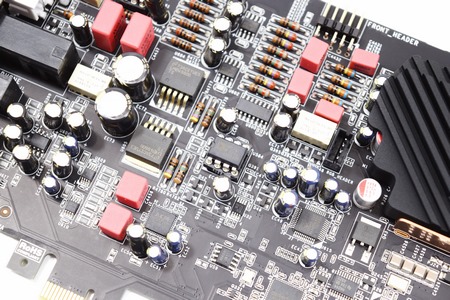
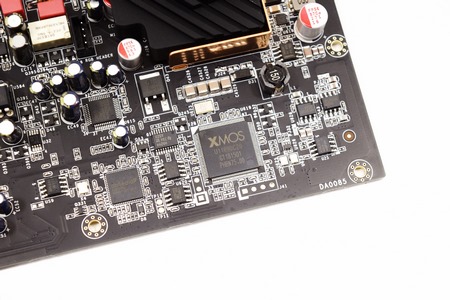
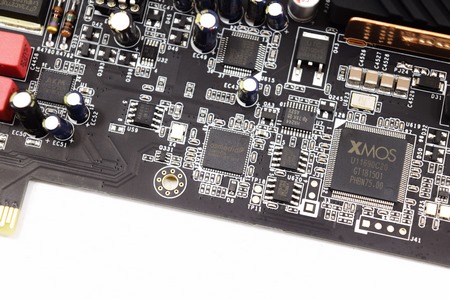
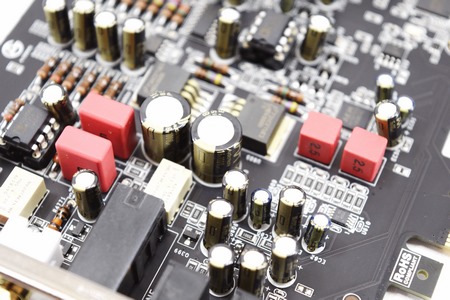
Closer examination of interior components reveals the ADI OP275 and AD8056 OP-AMP modules, Maxim Integrated DS1882 dual log audio digital potentiometer, AK4493 DAC, AKM AK5572 ADC, Cirrus Logic CS5346 ADC, Texas Instruments TPS7A47 and TPS7A33, ASMedia ASM1042A PCIe to USB 3.0 host controller, XMOS U11690C20 multi-core controller and finally several capacitors by Nichicon, WIMA and Panasonic.
Since according to EVGA the NU Audio Card is a primarily stereo card we performed our tests on the Edifier S1000DB multimedia speaker set, the Harman Kardon NOVA stereo speaker system and two surround sound systems via the S/PDIF output.
AUDIO DRIVER
You can download the latest version of EVGA's Audio Driver featuring Nahimic enhancements directly from their support page seen above.
This driver version included a firmware update which took less than a minute to complete.
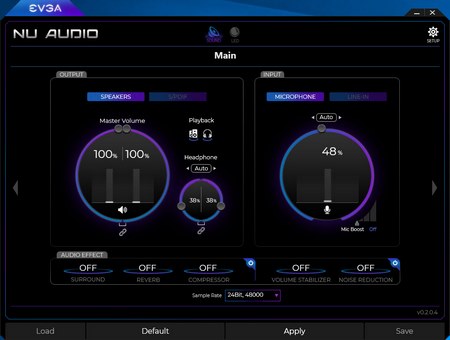
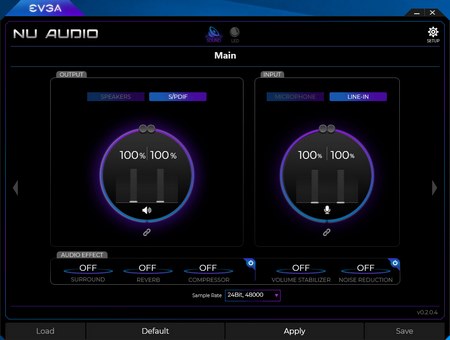
The main tab of the software allows you to control the volume of the various outputs (including the headphone out) and the microphone input or mute them all together.
It also allows you to switch between sample rates but do remember that for the S/PDIF digital output that is limited to 192KHz/24bit (you can go higher but you will not get any audio if you're using that output).
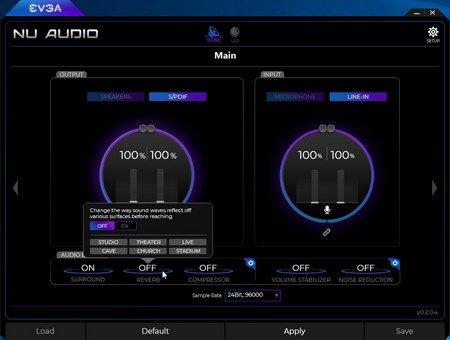
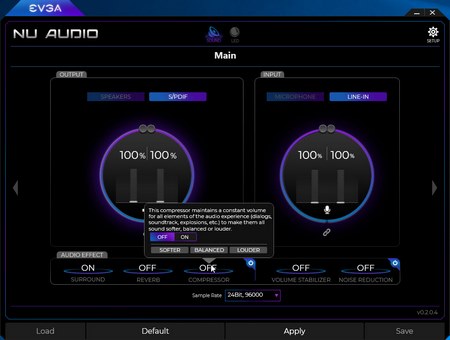
There are also several audio effects packed in the driver so aside enabling the 3D audio effect (virtual surround sound) you can also enable reverb (simulates another environment) and compressor (basically normalizes sound according to your preference).
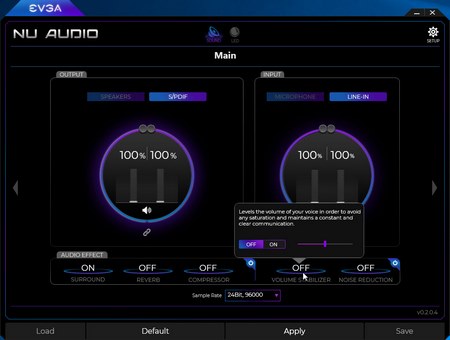
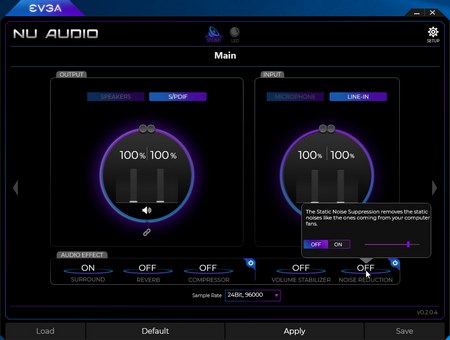
You can also enable volume stabilizer (again a type of normalizing this time however for your voice) and noise reduction (removes static noises) for the card’s inputs.
By clicking on the left and right arrows you can move to the 2nd screen from where you can adjust three wheels assigned to bass and treble boost and voice clarity.
If the quick adjust wheels don't do the trick for you there's always the advanced tab from where you can fine tune audio via an equalizer which then you can save in the 6 available profiles.
The next screen allows the end user to change the language of the software, check the installed firmware version and have the software screen minimize at start.
Next screen includes various settings such as the preferred ASIO buffer size, safe mode (which in our case was enabled by default - slightly increases latency when enabled) and several digital filters for both outputs and inputs.
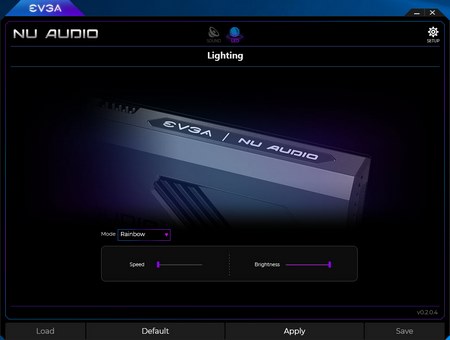
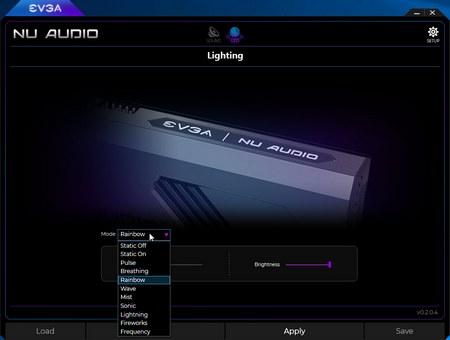
From the top of the software you can also access the LED screen from where you can switch between the 10 available modes (rainbow worked best for us - unfortunately the card doesn't feature RGB sync support) and adjust the speed and brightness levels.
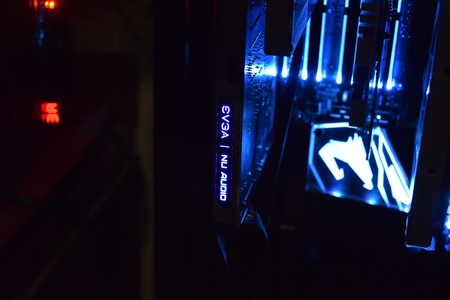
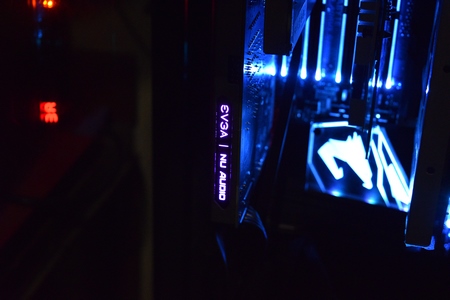
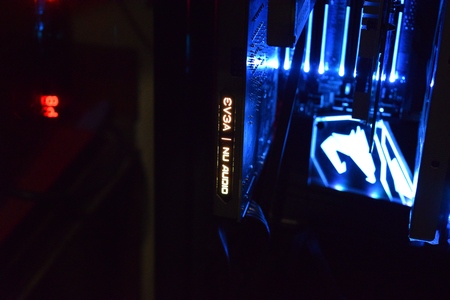
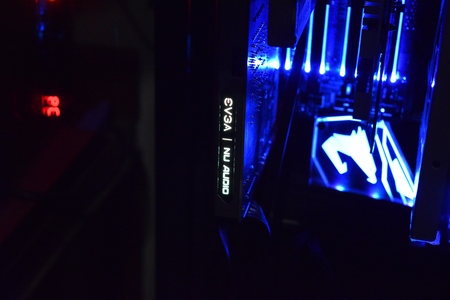
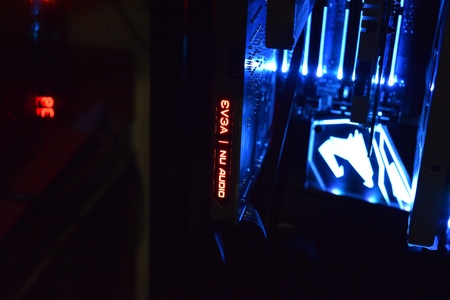
Here you can see some of the colors while in rainbow mode (would look even better if we could also use RGB sync with our GIGABYTE X299 AORUS GAMING 9).
CONCLUSION
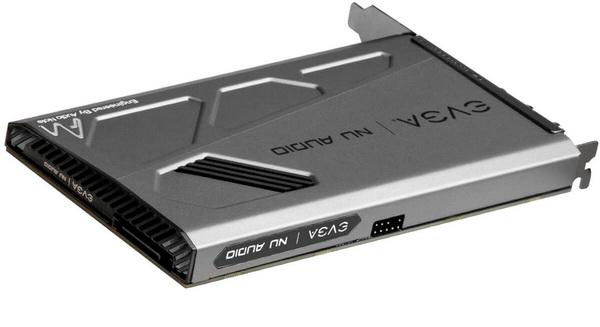
We tested the NU Audio Card by EVGA for a period of 12 days during which we put it up against an old Creative Sound Blaster X-Fi Titanium HD sound card (there was a time when that card was my favourite actually) and the onboard Creative Sound BlasterX 720 solution (127dB SNR AMP-UP Audio with High-End ESS SABRE 9018K2M DAC, LME 49720 and OPA1622 OP-AMP, WIMA audio capacitor) of the GIGABYTE X299 AORUS GAMING 9. Now as expected the somewhat old X-Fi Titanium HD card couldn’t keep up with the NU Audio card (still not half bad for a 10 year old model) but what really surprised us was that even the relatively new Sound BlasterX 720 also couldn't hold its own against it (probably because it isn't really based on a Creative audio chip to begin with). Positioning audio proved to be very good in several titles we used the card with (RAGE 2, Devil May Cry 5, Battlefield 1 and STAR WARS Battlefront II among others) but what really impressed us was audio clarity not just in games when you can even hear bullets passing by and instantly know where they came from but also music and movies. This may sound a bit weird to some of you but while using the NU Audio Card I noticed detail on some audio tracks I never had in the past (one good example is that while listening to the Highlander theme by Michael Kamen I heard instruments on the background which went unnoticed in the past – and that was just a track on a “normal” CD). I can’t say that the same exact thing happened while watching movies (voice clarity and bass levels however are quite impressive especially when you play around with the settings in the software) but it’s quite clear to me that Audio Note UK focused a lot on audio detail (isn’t that what matters in the end?) and even though it would be nice if the NU Audio Card was also aimed towards people with analog surround sound setups (not that many that i know however) there’s nothing to complain about. On a second thought volume levels could be slightly better especially since this card does use a SATA power connector but we can’t have it all (perhaps Audio Note UK can somehow improve on that with a future firmware update).
The moment you look at a product manufactured in part by one of the top manufacturers of ultra-performance valve based home audio systems you know it’s going to carry a hefty price tag and so currently the EVGA NU Audio Card retails for USD199.99 inside the USA (Amazon.com – as supplies last) and for 217Euros inside the EU (Amazon.co.uk). So yes, this isn’t an audio card targeted at regular consumers but rather audiophiles and serious gamers looking for something better than what’s out there without of course having to climb all the way up to far more expensive professional choices (which may also not offer something more to them). The only question is whether or not Audio Note UK and EVGA will continue with their cooperation by introducing more audio card models in the market, we certainly hope so since we enjoyed using the NU Audio Card so much that we’re happy to give it our Golden Award.

PROS
- Superior Build Quality
- Premium Audio Components
- Impressive Audio Clarity / Detail
- Very Good 3D Positioning Audio
- Future Proof / Customizable (OP-AMP Rolling)
- 10 Mode RGB LED
- Nahimic Enhancements
- 3 Year Limited Warranty
CONS
- Price (For Some)
- No Analog Surround Output (For Some)

 O-Sense
O-Sense





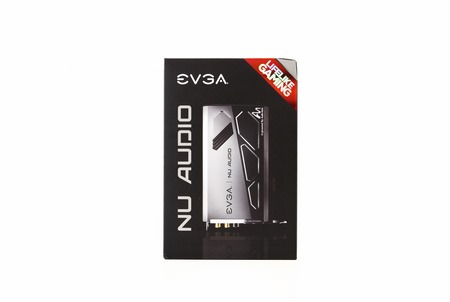
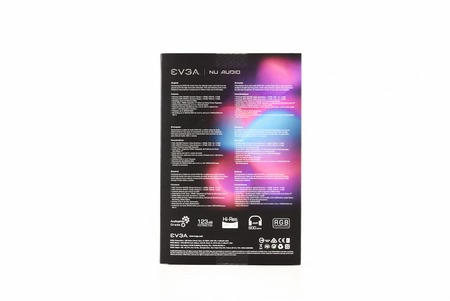
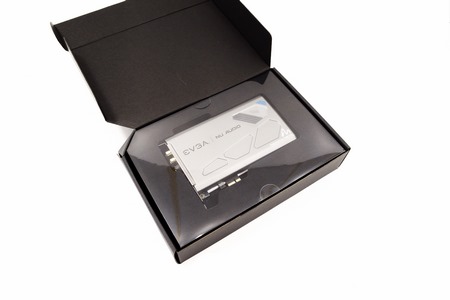
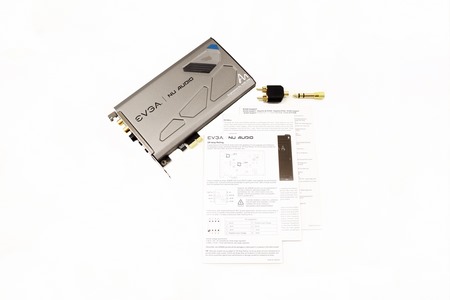
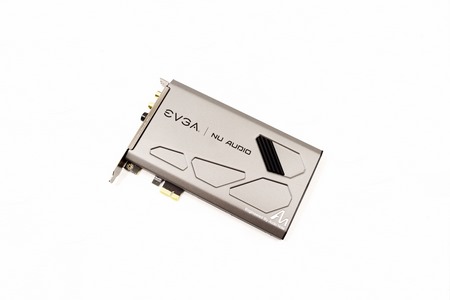
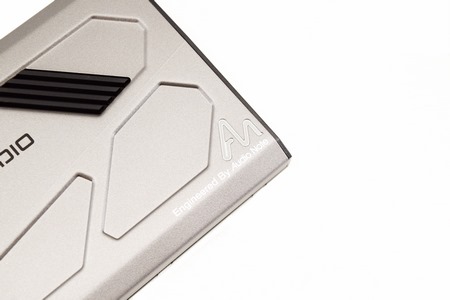
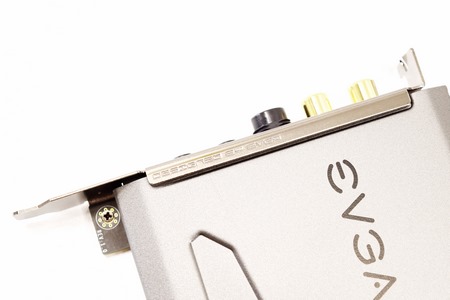
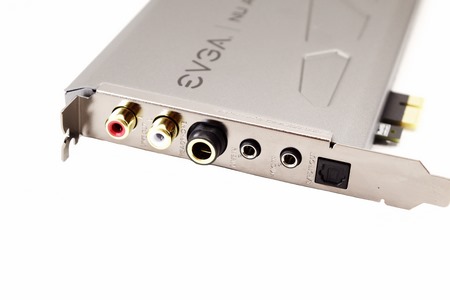
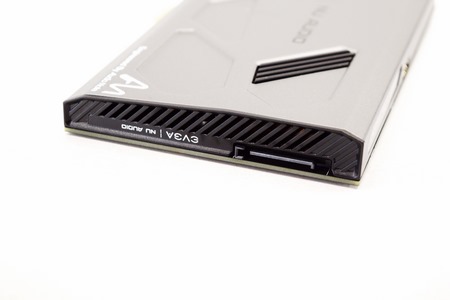
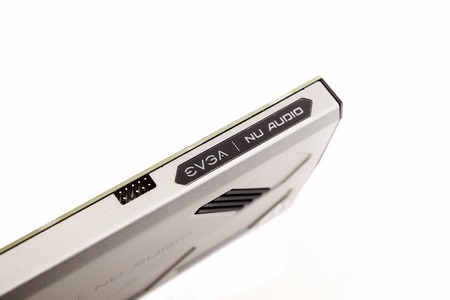
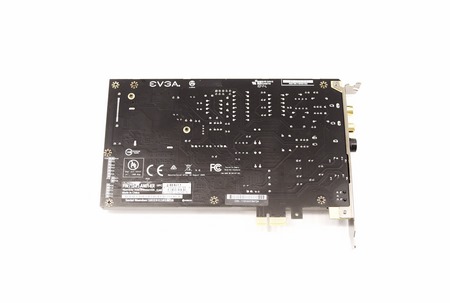
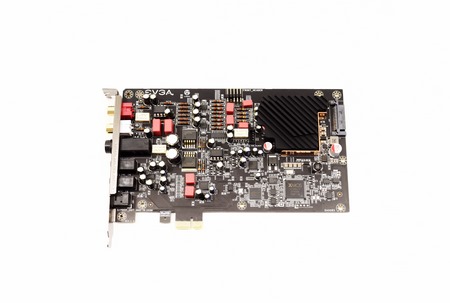
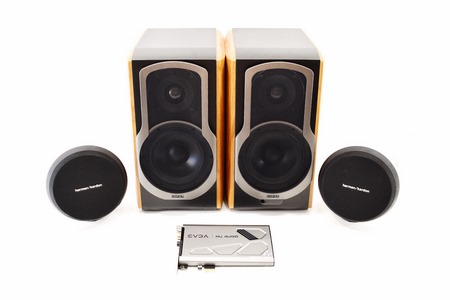
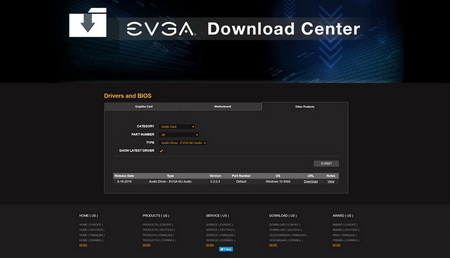
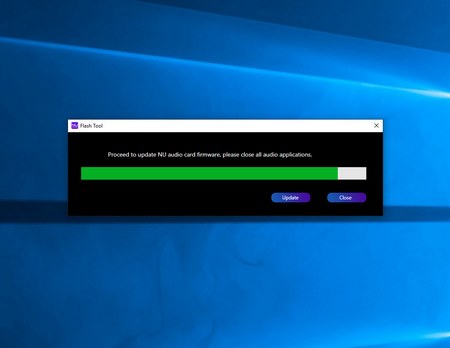
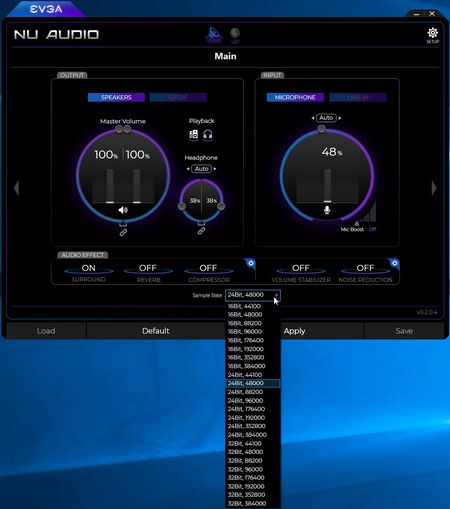
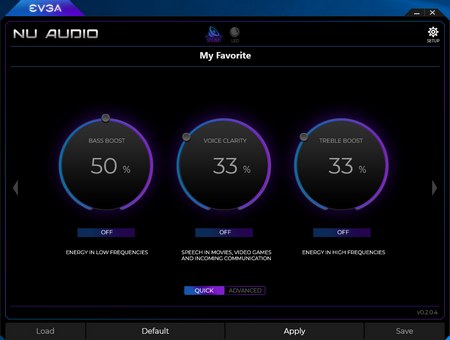
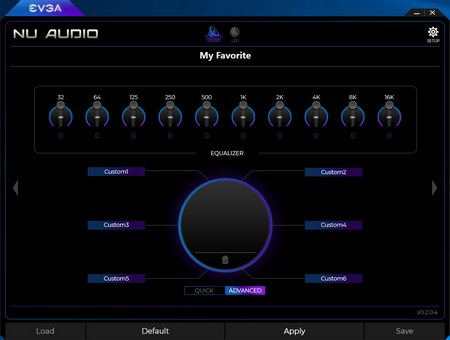
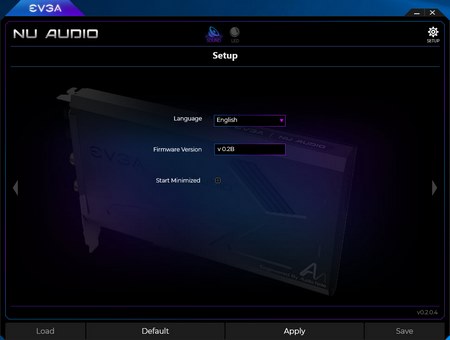
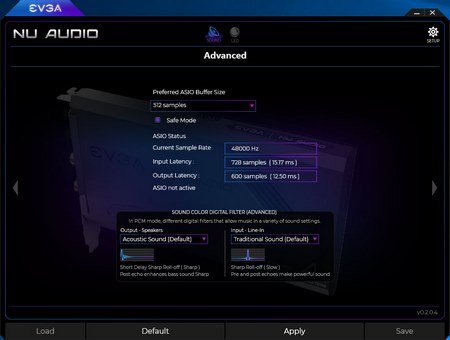


.png)

